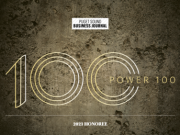Poor Ignorant Soul: At Web Design World, held in Seattle from July 30 to August 3, 2001, a two day conference was held on the subject of Web Usability. I was simply dumbfounded when the keynote speaker told the audience that it was important to make sure their Web sites sucked! Can you enlighten my clickstream of conciousness?
Ignoramus: Fear not, simple Simon, you weren’t hallucinating. According to Jared Spool, keynote speaker of Web Design World’s Web Site Usability Conference held in Seattle, from August 2-3, 2001, the key to Web success can be summed up in three words: It Should Suck! The best sites are rich with content. Content sucks users into the site. Every link gives off a scent that users follow. As the scent gets stronger, the user gets more confident that they are going in the right direction. The secret? Design for scent! And your content will suck!
For a usability engineer like Spool, his belief that “it’s all about content” is a but unusual. Usability experts generally tend to focus on site navigation or the “user experience.” But Jared’s opinion is that content is why people come to a Web site. The design of the site must reflect and support the content out of necessity. And yet too often the opposite is true. A Web site’s real estate does not often reflect the content.
Poor support for content may appear in the form of a page that is chock full of irrelevancies. Sometimes it is dedicated to off-line promotions not appearing on the site for fear that the site is becoming “old. ” Or the Website can be designed around overly cute navigational metaphors which are awkward, slow, and inscrutable; making it difficult to find important content easily.
By Mr. Spool’s reckoning, on the best web sites, users can only find answers to reasonable queries about 42% of the time. This percentage not having changed since 1996. Many sites are worse. Despite a reputed $250 million investment in its web site, only 15% of visitors to the Disneyworld web site can find the cheapest hotel on its monorail. Some 20% mistakenly pick a hotel in Disneyland, some 3,000 miles away.
Spool remarked that obstacles to e-commerce purchases are 40% content, and 60% functionality. It doesn’t have to suck like this, instead it can suck according to plan.
Often, barriers to sales can be reduced by involving customers or those close to customers. This was indicated in superior sales of REI over L.L. Bean in hiking boots, because REI web developers realized they needed to show the soles of the hiking boots.
Some of Mr. Spool’s recommendations included studying what is important to customers; using a high percentage of the screen for content (for instance MySchwab which devotes part of the screen to a person’s account, and only part to navigation); showing categories and subcategories on the same page to reduce confusion about how categories are divided; and providing enough information within a list of items to make an informed purchase decision — without having to click on a particular item.
An interesting statistic was that if a person hits the “back” button once, the probability that they will ever find what they want on a site is only 18%. If they hit the “back” button twice, it is only 2%. No wonder that Spool refers to the “back” button as the “Button of Death”.
Statistical studies showed that hyper-link labels consisting of 7-12 words were most effective. When looking for things on sites with link labels in this range, the success rate was 60%. The success rate was 20% if the link labels were 1-2 words, and 40% if the link labels were 3-6 words.
The idea of “trigger words” is useful to explain these results. People have certain words in mind with which to describe what they are looking for. If the link label is about 7-12 words, they are most likely to find their trigger word in the label. Shorter labels are less likely to contain the trigger word(s); longer labels do not get read.
To design web sites with good scent, Mr. Spool recommends thinking about the content first and foremost, not about what the home page should look like. Next, think about how to lay down scent trails to pull users to the content. And test the web site by watching actual users trying to perform specific and realistic tasks.
Want to learn more? Visit are referred to www.uie.com, and to www.uiereports.com.
Jared Spool is a founding partner of User Interface Engineering, a consulting firm specializing in the design and implementation of user interfaces. He has more than 15 years of experience conducting usability evaluations on a variety of products, and is an expert in low-fidelity prototyping techniques. A recognized authority on user interface design and human factors in computing, his clients have included Harvard Business School, IBM and Fidelity.




















